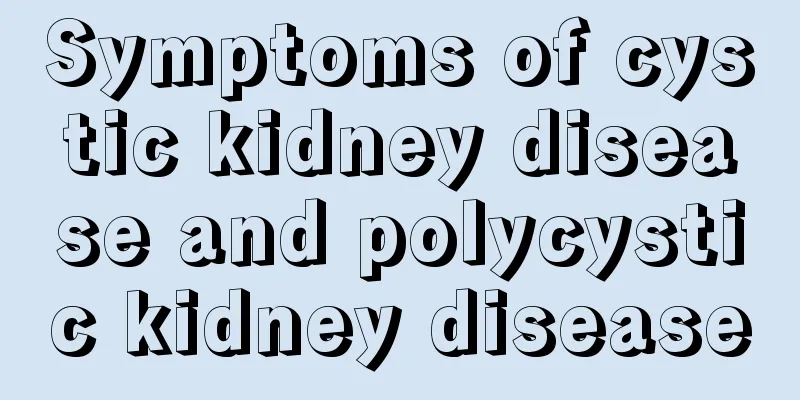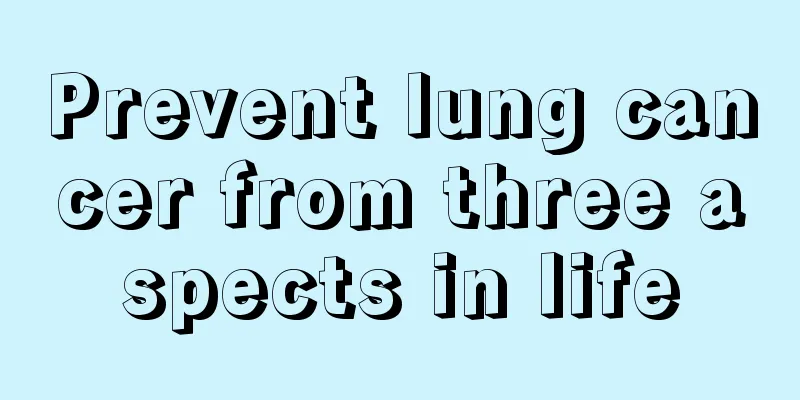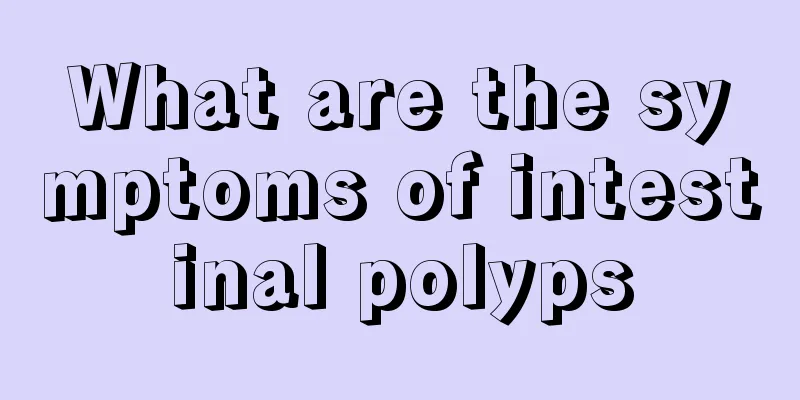Symptoms of cystic kidney disease and polycystic kidney disease

|
What is polycystic kidney disease? How does polycystic kidney disease develop? How to treat polycystic kidney disease? I believe everyone has a lot of such questions. For the sake of everyone's health, we need to strengthen our understanding of this aspect, because if we do not treat any disease, it will lead to unpredictable consequences. Let us now have a detailed understanding of cystic kidney disease and polycystic kidney disease, and have a comprehensive understanding of cystic kidney disease and polycystic kidney disease. 1. What are the clinical manifestations of polycystic kidney disease? In childhood, the kidneys remain normal size or slightly smaller, and small cysts may occasionally be found. The number and size of cysts gradually increase with age, but the progression is slow. In most cases, symptoms do not appear until after the age of 30 when the cysts and kidneys grow to a relatively large size. Common symptoms include: ① Enlarged kidneys: may be 5-6 times larger than normal, with significant differences between the two sides. In the early stages of kidney enlargement, imaging examinations are needed to detect it; in severe cases, abdominal palpation can detect it. ② Discomfort and pain in the waist and abdomen: This is caused by enlargement of the kidneys and cysts, increased tension on the renal capsule, or traction on the blood vessels and nerves of the renal pedicle. Sudden onset of pain is often caused by intracystic bleeding or secondary infection. Combined with stones or blood clots blocking the ureter after bleeding can cause renal colic. ③ Proteinuria and leukocyturia: 20% to 40% of patients aged 20 to 40 have mild persistent proteinuria, and the 24-hour urine protein quantity is generally less than 1g. Leukocytosis is common, but it does not necessarily mean a urinary tract infection. ④ Hypertension: It is a common manifestation of the disease in the early stage and directly affects the prognosis. It is reported that nearly 60% of patients without azotemia develop hypertension; among patients with normal renal function, the kidneys of those with hypertension are significantly larger than those with normal blood pressure. ⑤ Renal function impairment: Generally, chronic renal failure rarely occurs before the age of 30, and by the age of 59, about half of the patients have lost their renal function and require replacement therapy. 2. What are the extrarenal manifestations of polycystic kidney disease? (1) Polycystic liver disease: Polycystic liver disease is found in 70% of patients over the age of 60, and is more common in autopsy materials, with more than 90% of cases having polycystic liver disease. The incidence rate does not parallel the severity of renal cysts, and is generally discovered 10 years later than renal cysts and develops more slowly. The incidence rate is high in women (especially multiparous women) and the age of onset is early, and the number of cysts is large, which may be due to the involvement of female hormones in its formation. (2) Intracranial aneurysm: The incidence rate is 10% to 40%, and 9% of patients die from intracranial aneurysm rupture. It is the most dangerous comorbidity. (3) Abnormal development of heart valves: It has been observed that the incidence of mitral valve prolapse is 26%, and the incidence of mitral or tricuspid valve regurgitation is 31% and 15% respectively. 3. What are the complications of polycystic kidney disease? (1) Urinary tract infection: including cystitis, pyelonephritis, cyst infection and perirenal abscess. Among them, pyelonephritis and cyst infection are more difficult to distinguish. The presence of white blood cell casts and rapid response to conventional antibacterial treatment for urinary tract infection are conducive to the diagnosis of pyelonephritis, while positive blood culture and local tenderness tend to be cyst infection. (2) Kidney stones and renal calcification: When there is increased pain, colic, or gross hematuria, the possibility of concurrent stones should be considered. According to statistics, the complication rate is nearly 20%, and calcium and uric acid are the most common components. 4. Why does polycystic kidney disease lead to chronic renal failure? The mechanism of chronic renal failure in polycystic kidney disease is not only due to cysts compressing and replacing normal renal tissue, but also due to the following two factors: ① ischemia, sclerosis and/or inflammation, and fibrosis of non-cystic tissues (tubules, interstitium, and blood vessels); ② progressive loss of functional renal units causes high perfusion and high filtration of the remaining normal renal units, as well as the production of renal growth factors, which promote further destruction of the renal units. Comprehensive understanding of cystic kidney disease and polycystic kidney disease! Therefore, the condition of the adjacent areas determines how quickly renal impairment develops. High blood pressure and urinary tract infections are also factors that affect the rate at which kidney damage develops. The time to development of uremia is similar within the same family. I wish you a speedy recovery! The above has given you a detailed introduction to what polycystic kidney disease is and how it is formed. I hope it will be helpful to you. At the same time, patients with cystic kidney disease must have a new understanding of polycystic kidney disease, and prevent it early if there is no disease, and treat it early if there is disease! Get well soon! |
<<: What are the dangers of stimulant laxatives
>>: How to recognize blood in stool due to rectal cancer
Recommend
Is the formation of teratoma related to the radiation used for examination?
The formation of teratoma is usually not directly...
Symptoms of alcohol addiction
Although alcohol has become a popular drink now, ...
Timely prevention of the causes of esophageal cancer can prevent this disease
As the number of esophageal cancer patients in my...
Colonic diverticulitis
Nowadays, people’s daily work pressure and life p...
Three correct eating habits keep you away from colorectal cancer
Have you ever heard of colorectal cancer? How muc...
Things to note when traveling on snowy days
Winter is a season that many people like. Althoug...
What is the correct way to remove hair with white vinegar?
Modern people have very high requirements for the...
What to do if you are stung by a bee
In the season when flowers are in full bloom, we ...
What are the reasons for the development of multiple follicles?
The development of multiple follicles is a relati...
How to eat fresh lily
Flower cakes can be said to be the favorite of ma...
How to clean juice dripping on clothes
Fruit juice is very difficult to clean if it drip...
What should I do if blisters keep forming on the inner seams of my toes?
People often get blisters between their toes. The...
Does taking a bath lower blood pressure?
In this age of plenty, food and clothing are no l...
What are the side effects of coconut oil?
Coconut oil is the fat in coconut meat and is als...
What standards should hospitals that diagnose and treat brain cancer meet?
Brain cancer patients experience symptoms such as...









